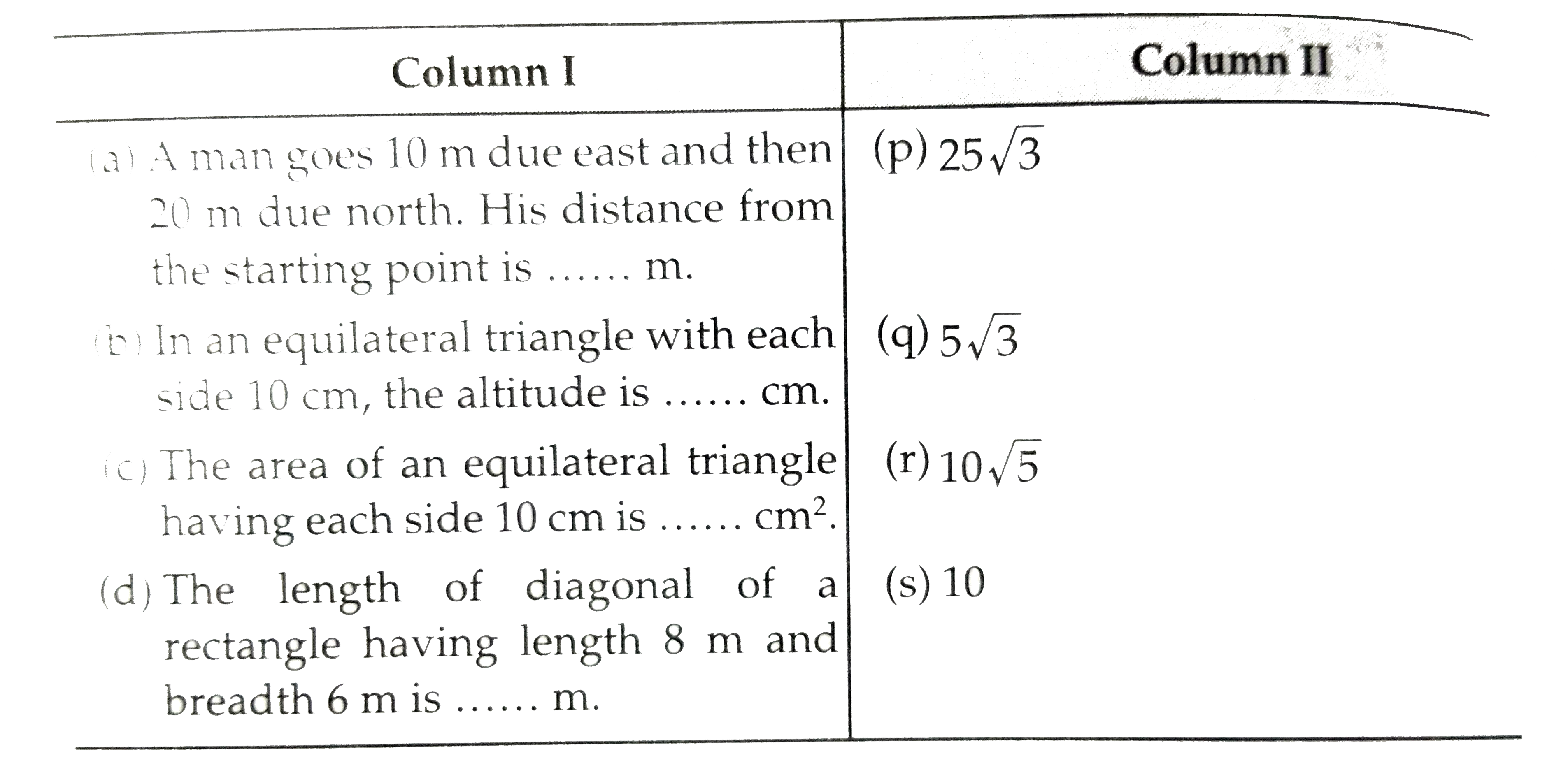
The correct answer a/b/c/d
Both Assertion (A) and Reason (R ) are true and Reason ( R) is a correct explanation of Assertion (A).
Both Assertion (A) and Reason (R ) are true but Reason (R ) is not a correct explanation of Assertion (A).
Assertion (A) is true and Reason (R ) is false.
Assertion (A) is false and Reason (R ) is true.
The correct Answer is:A
The Reason (R) is clearly true
Radius of each coin =1.752 cm , thickness =210cm=15cm
∴ volume of each coin =πr2h=(227×1.752×1.752×15)cm3
=(1170×175100×175100)cm3=77160cm3
Volime of cuboid =(10×5510×3510)cm3=3852cm3
Number of coins =(3852×16077)=400, which is true
Clearly , Reason (R) is true and Assereation (A) gives Reason (R)
So, the correct answer is (a)
Topper's Solved these Questions
Similar Questions
Match the following columns :

The correct answer is
(a) ......... (b) ...........
(c)......... (d) .........View SolutionThe probability of guessing the correct answer to a certain test questions is x12 If the probability of not guessing the correct answer to this question is 23 then x = (a)2 (b) 3 (c) 4 (d) 6
View Solution
Knowledge Check
- Question 1 - Select One
Is quadrilateral ABCD a rhombus ?
I. Quadrilateral ABCD is a ||gm.
II. Diagonals AC and BD are perpendicular to each other.Aif the question can be answered by one of the given statements alone and not by the other,Bif the quesiton can be answered by either statement alone,Cif the question can be answered by both the statements together but not by any one of the two,Dif the question cannot be answered by using both the statements together. - Question 2 - Select One
Is ||gm ABCD a square?
I. Diagonals of ||gm ABCD are equal.
II. Diagonals of ||gm ABCD intersect at right angles.Aif the question can be answered by one of the given statements alone and not by the other,Bif the quesiton can be answered by either statement alone,Cif the question can be answered by both the statements together but not by any one of the two,Dif the question cannot be answered by using both the statements together. - Question 3 - Select One
Is quadrilateral ABCD a parallelogram?
I. Its opposite sides are equal.
II. Its opposite angles are equal.
The correct answer is : (a) /(b)/(c )/(d).Aif the question can be answered by one of the given statements alone and not by the other,Bif the quesiton can be answered by either statement alone,Cif the question can be answered by both the statements together but not by any one of the two,Dif the question cannot be answered by using both the statements together.
In each of the Exercises choose the correct answer. If A and B are events such that P(AB)=P(BA), then
(a) A⊂B but A≠B
(b) A=B
(c) A∩B=ϕ
(d) P(A)=P(B)View SolutionIs quadrilateral ABCD a ||gm?
I. Diagonals AC and BD bisect each other.
II. Diagonals AC and BD are equal.View SolutionAssertion (A) : If three angles of a quadrilateral are 130∘,70∘ and 60∘ then the fourth angle is 100∘
Reason(R) : The sum of all the angle of a quadrilateral is 360∘
The correct answer is : (a) /(b)/(c )/(d).View SolutionFor every question, four probable answers as (A), (B), (C) and (D) are given. Only one out of these is correct. Choose the correct answer.
Which of the following is not equal to 25?View SolutionA list of animals is given below. Identify the animals with open circulatory system and choose the correct answer. (A) Acidia (B) Cockroach (C) Earthworm (D) Prawn (E) Silverfish (F) Snail (G) Squid
View Solution

